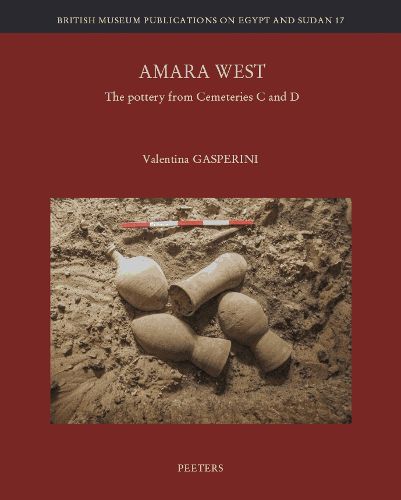Readings Newsletter
Become a Readings Member to make your shopping experience even easier.
Sign in or sign up for free!
You’re not far away from qualifying for FREE standard shipping within Australia
You’ve qualified for FREE standard shipping within Australia
The cart is loading…






The two cemeteries of Amara West in Sudan, a town founded in around 1300 BC as a new centre for the colonial pharaonic administration of Kush (Upper Nubia), were excavated by the British Museum's Amara West Research Project between 2009 and 2016. This book focused on the ceramic vessels placed in the burials, between c. 1300 BC and the 8th century BC. The comprehensive analyses of the pottery, accompanied by a full catalogue, provides insights into the role of ceramic vessels for funerary purposes, trade networks between Upper Nubia, Egypt and farther afield. The inclusion of Nubian hand-made vessels with some burials reflects aspects of cultural entanglement, and raises questions of identity and cultural affiliation, particularly in the transition between the period of pharaonic occupation and its aftermath. An introduction by Michaela Binder provides an orientation to the architecture and archaeology of the cemeteries.
$9.00 standard shipping within Australia
FREE standard shipping within Australia for orders over $100.00
Express & International shipping calculated at checkout
The two cemeteries of Amara West in Sudan, a town founded in around 1300 BC as a new centre for the colonial pharaonic administration of Kush (Upper Nubia), were excavated by the British Museum's Amara West Research Project between 2009 and 2016. This book focused on the ceramic vessels placed in the burials, between c. 1300 BC and the 8th century BC. The comprehensive analyses of the pottery, accompanied by a full catalogue, provides insights into the role of ceramic vessels for funerary purposes, trade networks between Upper Nubia, Egypt and farther afield. The inclusion of Nubian hand-made vessels with some burials reflects aspects of cultural entanglement, and raises questions of identity and cultural affiliation, particularly in the transition between the period of pharaonic occupation and its aftermath. An introduction by Michaela Binder provides an orientation to the architecture and archaeology of the cemeteries.